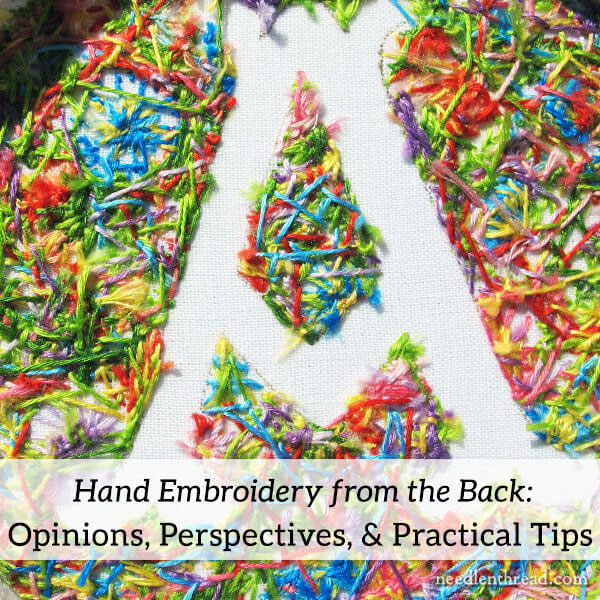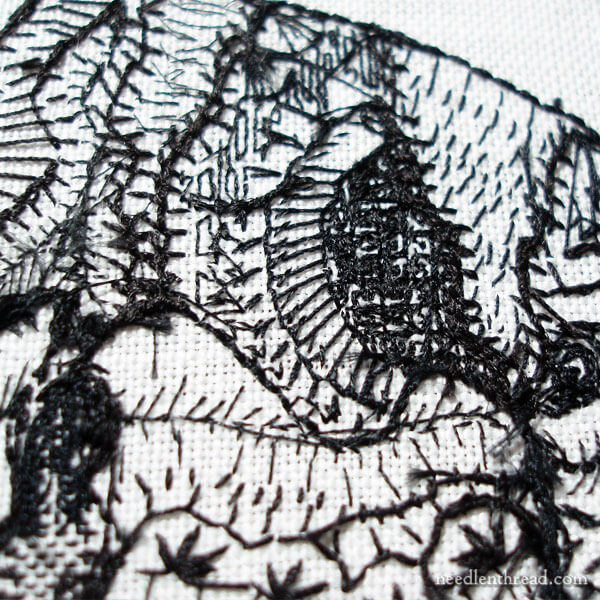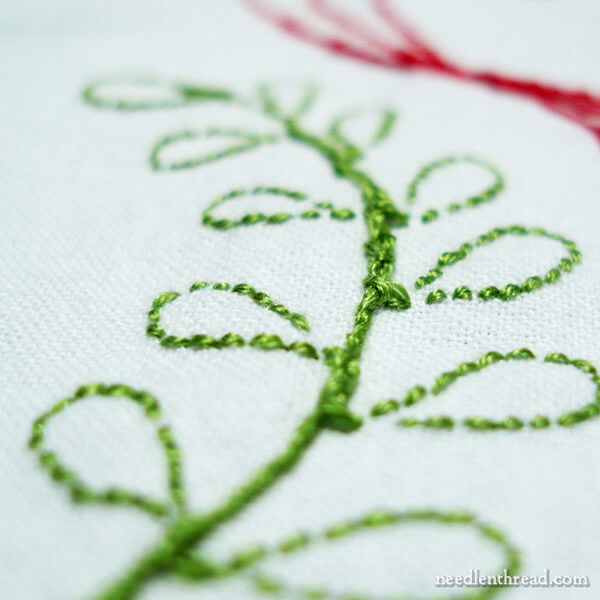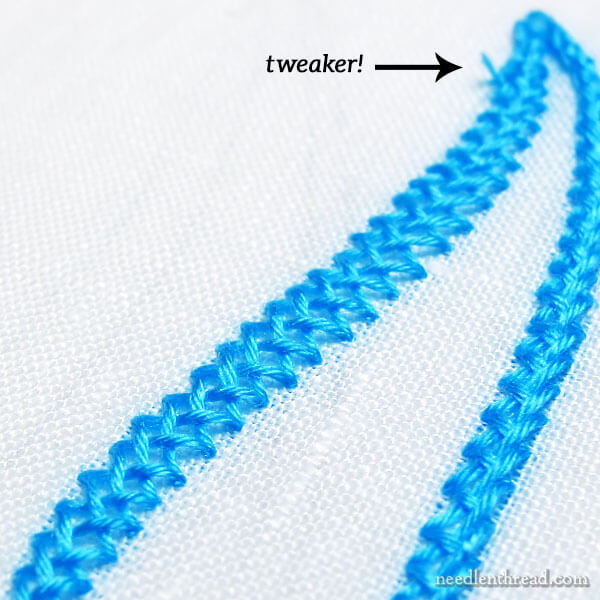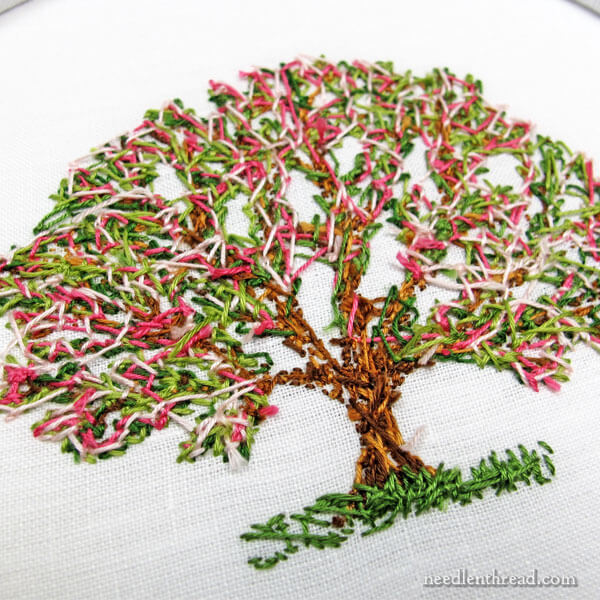I bet you are wondering what 15¢ has to do with a stitching blog, well let me tell you.
As many of you know I had a You Tube channel called "Sunroom Stitcher" in the Floss Tube community and I enjoyed sharing what was going on in my neck of the woods. I made many friends and was inspired all the time and showed it in a way that had me spending lots of money each month on stash. However I noticed it was a trend not only with me but with others also. I honestly do not believe mine was ever intended to part of a contest. However with others it was.
Then one day a troll reported me to You Tube and my account was terminated. Without an investigation into my heinous behavior (pun intended), all my videos were gone. To this day I cannot figure out what about my stitching was in violation of the community guidelines. I didn't dwell on it too long.
This account has been terminated due to multiple or severe violations of YouTube's policy against spam, deceptive practices, and misleading content or other Terms of Service violations.
I began looking at the floss tube videos in a different light and saw the sameness of most of them. You know the ones, the ones where most of the video is dedicated to what stash was bought. There are also the ones whose homes are so "decorated" with stuff you can't focus on anything else. Yes Easter, threw up all over their home, then Valentine's Day threw up all over their home, then July 4th threw up all over their home, then Halloween threw up all over the inside of their home and spilled out into the yard.
I was also appalled by the behavior of these stitchers who suddenly likened themselves celebrities, drinking at retreats, begging for money for their honeymoon and verbally attacking people in wheelchairs. No longer did I want to be associated with any of them. I wanted to stop my madness and really enjoy what I had.
I rarely watch videos anymore, very rarely. There are some lovely Floss Tubers who I catch from time to time such as Kitty Stitcher/EDS Warrior, Vonna Pfeiffer and A Stitch Too Far, Carolyn Mazzeo (no longer making videos) and Mrs Milky Bar Kid. I know there are a couple others that I failed to mention.
I today am enjoying my stitching and buying little to no stash which is fabulous. I stitch with what I have and occasionally purchase a skein of floss. I still look for freebie designs but have actually stitched free designs I have had for 20+ years. I am loving saving money to have my roof fixed, my husband's dental work done and I look forward to buying a new pair of eye glasses.
15¢ does matter, it matters here and there and it adds up to bigger savings. 15¢ just doesn't stay 15¢ either, it becomes 30¢ and then a dollar and on and on until I am trying to keep up with the Janes and Josies on Floss Tube. I blame myself for being part of it but I am done with it all! Please read Mary Hunt's article below, it may open you up to a more promising future and enjoying what you have at this very moment.
|
|
By Mary Hunt on 06/26/17
I used to think that small amounts of money didn’t matter. What difference could $5 here or $10 there make when we were more than $100,000 in debt (not counting the house and cars)?
So what if I increased our debt by such a small amount—it wouldn’t really matter because we already owed so much. I used the same argument for not paying anything more than the minimum monthly payments on our credit cards because that too would make no difference.
Boy, did I have a lot to learn. The truth is that we five-and-10-dollared ourselves to death. It was the little things that added up to create a huge monster. Thinking that the little things didn’t matter freed us to think $2, $5 or $20 didn’t matter … then
$50 didn’t matter, and on and on it went.
Ironically, it was the little things that turned us around, too. Sending an extra $2, $5 or $20 every month to rapidly repay the debt we were targeting helped us find a way to make the payment $22, then $35 and soon a $100 payment became standard.
I’ve had people look at me like I was a little weird when I suggested they should not use a first-class stamp on a postcard. I mean, does 15 cents really matter? I think it does, not so much for the dime and nickel, but for the attitude. You see, if you casually
throw 15 cents away when it comes to a postage stamp, it’s much easier to begin thinking slightly larger sums don’t matter, either. And soon you’ll be on your way to thinking $20 is not a big deal. Then you’ll be headed for trouble.
Yes, my friends, 15 cents does matter. If you understand that, then $1.50 matters and $15 will matter even more, and on and on right up to $15,000.
Some wise person once said, “Watch the pennies, and the dollars will take care of themselves.” I have proven that to be true and I hope you can, too.
Here are three easy ways to stash cash:
Coins. Don’t spend them. Save them, instead. Every evening, empty your pockets, purse and wallet of all coins. Even if the bill comes to $4.05, hand the clerk a $5 bill and stash the difference. When you accumulate $25 or so, roll, wrap and
send them off to your savings account.
Windfalls. No matter how small, make it a habit to bank all coupon savings, rebate checks, refunds and other “found money.”
Save an extra 10 percent. Stash 10 percent of your pocket money, grocery money and any other “walk around” funds you control in your secret savings spot. Chances are you won’t even miss it. But soon you’ll discover that $2 here and $4 there
really adds up.
Recent posts on Everyday Cheapskate:
|
|
|
|










